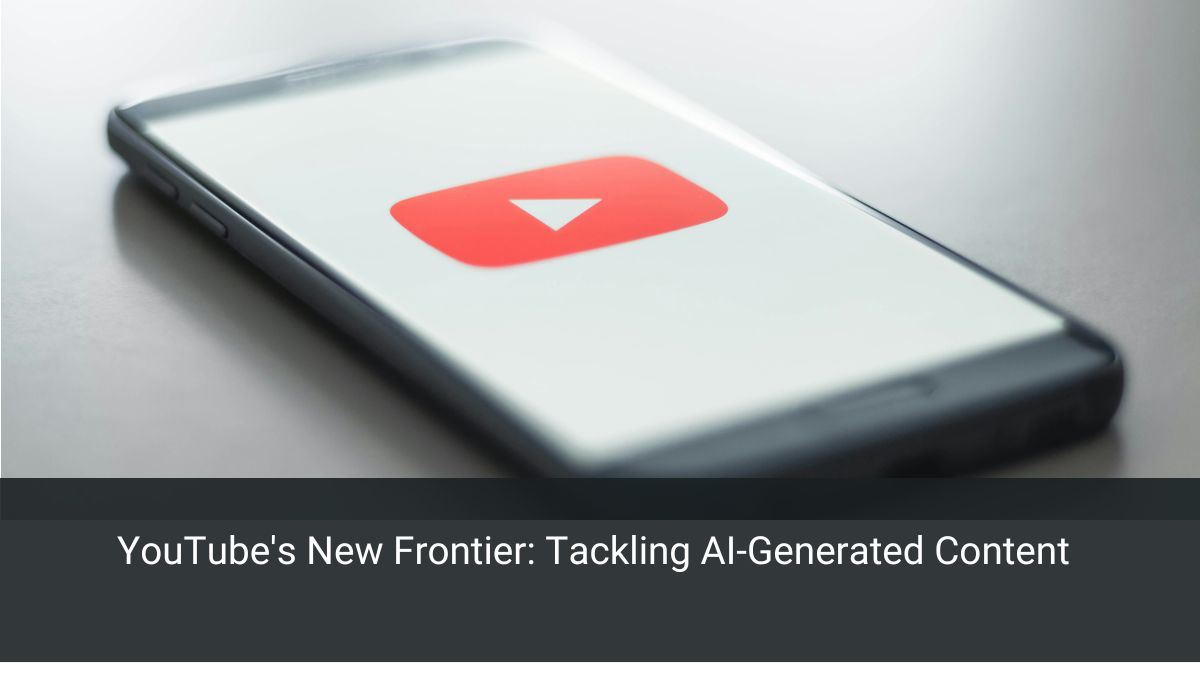AI
YouTube’s New Frontier: Tackling AI-Generated Content

In the ever-evolving landscape of digital media, YouTube has taken a significant step forward in addressing the challenges posed by artificial intelligence. The platform’s recent policy update allows users to request the removal of AI-generated content that simulates their face or voice. This move represents a pivotal moment in the ongoing struggle to balance technological innovation with personal privacy and content authenticity.
The Rise of Synthetic Media
A Double-Edged Sword
Artificial intelligence has ushered in an era of unprecedented creative possibilities. With a few clicks, anyone can now generate hyper-realistic images, videos, and audio that mimic real people. While this technology opens up exciting avenues for art and entertainment, it also presents a Pandora’s box of ethical concerns.
As someone who’s dabbled in AI-generated art, I’ve experienced firsthand the thrill of creating something seemingly out of thin air. However, I’ve also grappled with the unsettling realization of how easily this technology could be misused.
The YouTube Conundrum
YouTube, as one of the world’s largest video-sharing platforms, finds itself at the epicenter of this digital revolution. The platform has long been a haven for creators of all stripes, from amateur vloggers to professional content producers. But with the advent of AI-generated content, the line between authentic and synthetic media has become increasingly blurred.
YouTube’s New Policy: A Closer Look
Empowering Users
In a move that acknowledges the growing concerns surrounding AI-generated content, YouTube has expanded its privacy request process. Users can now ask for the removal of synthetic content that simulates their face or voice. This policy shift, quietly implemented in June, marks a significant expansion of YouTube’s responsible AI agenda first introduced in November.
The Nuances of Removal Requests
It’s important to note that submitting a takedown request doesn’t guarantee removal. YouTube has outlined a nuanced approach to evaluating these claims:
- Disclosure: Is the content clearly labeled as synthetic or AI-generated?
- Identification: Does the content uniquely identify an individual?
- Public Interest: Could the content be considered parody, satire, or otherwise valuable to the public?
- Public Figures: Does the content feature well-known individuals?
- Sensitive Content: Does the AI-generated material depict criminal activity, violence, or political endorsements?
This multi-faceted approach demonstrates YouTube’s attempt to balance individual privacy rights with freedom of expression and public interest.
The Bigger Picture: AI and Content Moderation
A Global Challenge
YouTube’s policy update is part of a broader trend in the tech industry. As AI-generated content becomes more prevalent and sophisticated, platforms are grappling with how to moderate and regulate this new form of media.
I recall a recent conversation with a friend who works in content moderation. She described the increasing difficulty in distinguishing between real and AI-generated content, especially in cases of potential misinformation or deepfakes. It’s a challenge that requires not just technological solutions, but also human judgment and ethical considerations.
The Role of Creators
YouTube’s approach places significant responsibility on content creators. The platform has introduced tools in Creator Studio for disclosing when content uses altered or synthetic media. This push for transparency is crucial in maintaining trust between creators and their audience.
As a occasional YouTube creator myself, I appreciate the importance of this disclosure. It’s about maintaining an honest relationship with viewers and respecting the individuals whose likenesses might be used in our content.
Implications for the Future
Balancing Innovation and Regulation
YouTube’s policy update reflects a broader societal struggle to keep pace with technological advancements. As AI becomes more sophisticated, we’re likely to see more platforms implementing similar measures.
The challenge lies in striking the right balance. How do we foster innovation while protecting individual rights? How can we enjoy the creative possibilities of AI without compromising on authenticity and trust?
Election Year Concerns
With major elections on the horizon in many countries, the potential for AI-generated content to influence public opinion is a pressing concern. YouTube’s consideration of political endorsements in its review process is a nod to these high stakes.
I’m reminded of a recent local election where a candidate’s AI-generated endorsement video caused significant controversy. It underscores the need for vigilance and clear guidelines in our digital spaces.
The Path Forward
Education and Awareness
As we navigate this new terrain, education will be key. Users, creators, and platforms alike need to be informed about the capabilities and limitations of AI-generated content. Understanding how to identify and responsibly use synthetic media will be crucial skills in the digital age.
Collaborative Approach
Addressing the challenges of AI-generated content will require collaboration across industries. Tech companies, policymakers, ethicists, and content creators must work together to develop standards and best practices.
Continuous Evolution
YouTube’s policy is likely just the beginning. As AI technology continues to advance, we can expect ongoing updates and refinements to how platforms handle synthetic content.
A Call for Digital Citizenship
YouTube’s new policy on AI-generated content removal is more than just a technical update. It’s a reflection of the complex interplay between technology, privacy, and free expression in our digital world.
As users and creators, we all have a role to play in shaping this landscape. It’s about being responsible digital citizens – understanding the power of the tools at our disposal and using them ethically.
The future of content creation and consumption is undoubtedly intertwined with AI. But it’s up to us to ensure that this future is one where creativity flourishes, privacy is respected, and truth remains discernible.
As we move forward, let’s embrace the possibilities of AI while remaining vigilant about its potential pitfalls. After all, the digital world we’re creating is a reflection of our values and choices. What kind of online space do you want to be a part of?
